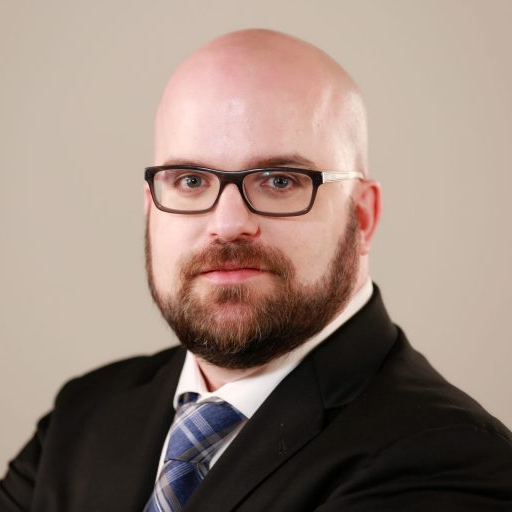“While the issue of where to draw the line for when an injunction is appropriate is not necessarily clear when more than one patent is involved, placing limitations on the assertion of an individual patent where hold-up is not possible, in the name of addressing hold-up, cannot be correct.”
 In Part I of this series of articles, we provided an overview of the 2013 and 2019 policy statements that preceded the 2021 Draft Policy Statement. In this Part II, we consider the language of a specific licensing commitment made to European Telecommunications Standards Institute (ETSI), and various legal pronouncements that have been made in relation thereto.
In Part I of this series of articles, we provided an overview of the 2013 and 2019 policy statements that preceded the 2021 Draft Policy Statement. In this Part II, we consider the language of a specific licensing commitment made to European Telecommunications Standards Institute (ETSI), and various legal pronouncements that have been made in relation thereto.
The ETSI Commitment / Current State of the Law
Analyzing the 2021 Draft Policy Statement in a vacuum is like trying to watch a 3D movie without the glasses. For it is only once one considers the language of an actual FRAND licensing commitment, for example the one employed by ETSI, and the current state of the law relating thereto, that can one discern the many unsupported and incorrect assumptions baked into the 2021 Draft Policy Statement and appreciate the implications thereof.
As a starting point, consider the language of the ETSI license commitment, which provides as follows (emphasis added):
To the extent that the IPR(s) disclosed in the attached IPR Information Statement Annex are or become, and remain ESSENTIAL in respect of the ETSI Work Item, STANDARD and/or TECHNICAL SPECIFICATION identified in the attached IPR Information Statement Annex, the Declarant and/or its AFFILIATES are (1) prepared to grant irrevocable licenses under this/these IPR(s) on terms and conditions which are in accordance with Clause 6.1 of the ETSI IPR Policy…
Notably, the language “prepared to grant irrevocable licenses” reflects the fact that a license is an agreement which, in turn, requires a meeting of the minds and both sides to accept a certain amount of risk regarding unknowns. In view of this, Judge Rodney Gilstrap found in a breach of contract case that, as a matter of French law, patent owners can satisfy their contractual obligations by either offering a license on FRAND terms and conditions or negotiating in good faith towards a FRAND license (see Memorandum Opinion and Final Judgment, HTC Corporation, HTC America Inc v. Telefonaktiebolaget LM Ericsson, Ericsson Inc, , Case No: 6:18-CV-00243-JRG (E.D. Texas, May 22, 2019)). This ruling was not appealed.
In the context of a patent infringement action, however, several cases have found that the party seeking to rely on a licensing commitment or patent policy, as a defense or limitation on remedies, bears the burden of making out that defense / limitation. In view of the conditional language that the commitment to license on FRAND is “to the extent… the IPR(s)… are or become, and remain ESSENTIAL” (emphasis added), this requires a potential licensee to accept essentiality in order to assert any contractual obligation exists in the first place. See, for example, the United States District Court for the District of Delaware’s 2020 ruling that Sierra Wireless’ FRAND-based counterclaims failed on summary judgment as a result of Sierra Wireless’ failure to prove essentially (Koninklijke KPN N.V. v. Sierra Wireless, Inc., No. 17-90-LPS, 2020 U.S. Dist. LEXIS 67016 (D. Del. Apr. 16, 2020)). The rule is the same at the ITC (see Certain Electronic Devices, Including Wireless Communication Devices, Portable Music and Data Processing Devices, and Tablet Computers, Inv. No. 337-TA-794 (USITC 2012) wherein Apple was found to have not met its burden to prove a FRAND defense regarding a Section 337 Investigation brought by Samsung. Of course, this is the case that led to President Obama issuing an executive order overriding the injunction in view of Apple not making out any FRAND based defenses).
Next, consider that having an unexercised right to FRAND licenses under a contract between a patent owner and ETSI is not the same thing having a license itself. The big difference, of course, being that the former is not a defense to, nor limitation on remedies for, patent infringement. As Judge Rodney Gilstrap noted, “Federal Rule of Civil Procedure 8(c)(1) identifies ‘license’, ‘release’, and ‘waiver’ as affirmative defenses. To the extent that Apple maintains that FRAND places an additional contractual limitation on damages beyond the instructions that the Court provided the jury, Apple should have properly raised that defensive issue and asked the Court for instructions to the jury consistent with that issue.” (see Optis Wireless Technology, LLC et al. v. Apple Inc., Civil Action No. 2:19-cv-00066-JRG (E.D. Texas, September 10, 2020) Opinion and Order as to Bench Trial Together with Supporting Findings of Fact and Conclusions of Law)
What, then, is the basis for any special rules to be applied to patents subject to a licensing commitment if an alleged infringer does not have a license and no contractual obligation has been shown to exist? Even if a contractual obligation did exist (i.e. because the patent in question was essential), and that obligation had been breached, why aren’t remedies for breach simply assessed as they always are, instead of shoehorning contract law principles into remedies for patent infringement (as we previously wrote about here)?
Coming back to the language of the ETSI licensing declaration, what is perhaps most important to recognize is what is not said. For instance, the licensing declaration says nothing about agreeing to limit remedies for infringement in situations where a potential licensee did not secure a license before being found to infringe. The ETSI Intellectual Property Rights (IPR) policy and Guide on IPRs are similarly silent on this point. Consistent therewith, the Court of Appeals for the Federal Circuit (CAFC) recognized, in Apple v. Motorola, the right to enhanced damages for willful infringement “if a trial court believes that an infringer previously engaged in bad faith negotiations” and rejected any per se rule precluding injunctions for standards related patents, saying “an injunction may be justified where an infringer unilaterally refuses a FRAND royalty or unreasonably delays negotiations to the same effect.”. Recycling the words of the 2013 Policy Statement, what seems to be “incompatible with the terms of a patent holder’s existing F/RAND licensing commitment to an SDO”, therefore, are not remedies for patent infringement, but rather the 2013 Policy Statement’s encouraging differential treatment of patents merely because they are subject to a licensing commitment.
Setting aside the situation where a patent owner refuses to give a licensing commitment, which is not what the policy statements are addressing (rather, they consider patents that are subject to voluntary F/RAND commitments), the only potential “FRAND” related limitations on right to the full scope of remedies for patent infringement in the United States would appear to come from antitrust regulators. We say potential as the only limitations that have been imposed thus far, that we are aware of, apply to Google and Motorola only (see the Federal Trade Commission’s Decision and Order In the Matter of Motorola Mobility LLC and Google Inc. (hereinafter “the Google Consent Decree”) which sets forth requirements that must be met before Google and/or Motorola can seek injunctive relief including, amongst other things, providing notice, a license offer and an offer to arbitrate). Similarly, in the case of Huawei v. ZTE (Case C-170/13), the Court of Justice for the European Union concluded that it is not a violation of EU competition law to seek an injunction for a patent subject to a licensing commitment so long as the implementer is given notice and, if the implementer responding by indicating it wants FRAND licenses, an offer. This view was later endorsed by the European Commission’s Communication from the Commission to the European Parliament, the Council and the European Economic and Social Committee: Setting out the EU approach to Standard Essential Patents. The Beijing High People’s Court’s Guidelines for Patent Infringement Determination (2017) (“Beijing Guidelines”) also sets forth guidelines for when an injunction is appropriate, having reference to both the actions and inactions of the patent holder and accused infringer. Notably, each of the Google Consent Decree, Huawei v. ZTE and the Beijing Guidelines are framed as a matter of when it is inappropriate to seek an injunction, i.e. none say anything about it being a violation to seek damages for infringement or damages in excess of FRAND rates. In fact, the Google Consent Decree specifically states the opposite: “[n]otwithstanding any other provision of this Order, nothing herein shall:… prevent or restrict Respondents from pursuing relief, claims or defenses other than Covered Injunctive Relief, including damages for infringement and potential enhancements for willful infringement”.
The licensing commitment to ETSI, its IPR Policy and Guide on IPRs, are also silent with respect to: (1) patent owners bearing a burden of proof of showing licenses are required (i.e. a patent is essential to a standard, not invalid…); (2) implementers having the right to FRAND licenses after fully litigating all underlying issues; and (3) implementers being able to challenge validity after entering into licenses. Regarding essentiality, specifically, allowing implementers to maintain entitlement to FRAND while arguing against essentiality is flat out inconsistent with the language of the ETSI licensing commitment and unjustifiably places a thumb on the scale in favor of implementers. Simply put, allowing implementers to have their FRAND cake and eat it too encourages hold out. Why pay the parking meter if the fine is no more than the original fee? Further, allowing implementers to hold out on FRAND licenses until infringement is established can make licensing untenable for many patent owners and does not factor in the change in risk that occurs after underlying patent issues have been litigated nor the enormous costs to litigate.
Last, but certainly not least, courts in the United States have thus far been unwilling to determine the terms of a FRAND license and award the same as a remedy in the absence of other litigation. First note, with respect to the Federal Court system, Judge Rodney Gilstrap found that such courts do not have jurisdiction to rule on FRAND related claims to the extent involving “foreign laws, foreign patents or any FRAND defense or any FRAND defense [one] may raise in a foreign jurisdiction” (Optis v. Apple). Next, even if a patent owner were to obtain a declaration of compliance with FRAND obligations and/or no breach of FRAND (which is not necessarily a determination of what is FRAND…) for purposes of its U.S. patents only, a FRAND license would not follow as a remedy. Nor can patent owners compel implementers to engage in binding arbitration. As such, there is no recourse in the United States for a patent owner to be compensated for unlicensed use of its technology by an implementer that is holding out other than to sue for infringement on a patent-by-patent basis.
Where’s the Beef?
Given a permanent injunction can only follow an action for infringement, an implementer will have ample opportunity to raise any defense or counterclaim based on any licensing commitments, patent policies… and/or prior decisions relating thereto. How then can hold-up occur? Using the words of the 2013 Policy Statement once again, how does a patent owner assert a patent so as “to exclude a competitor from a market or obtain a higher price for its use than would have been possible before the standard was set…”? For if there were somehow a limitation on remedies imposed by a license commitment, the court would presumably honor that limitation following proof of the same. Alternatively, using the words of the 2019 Policy Statement this time, how can “demand[ing] excessive royalties after companies are locked into using a standard” negatively impact an implementer that is already using the technology without paying and is entitled to a full hearing before any remedies will be awarded?
One can only speculate that the DOJ, USPTO and NIST are concerned with the situation where a patent holder uses an injunction regarding one patent as leverage to enter a license to a larger portfolio. This was, of course, of particular concern to Huawei in its case against Unwired Planet, especially given most of Huawei’s allegedly infringing activities took place outside of the UK. In that case, the UK Court of Appeal responded to Huawei’s concerns by saying, with respect to future validity challenges, “the license could and should include an appropriate mechanism to deal with the outcome of such proceedings.” Notably, the UK courts did not take away Unwired Planet’s right to a UK injunction, but rather exercised its equitable jurisdiction in a manner to try to achieve a just result in the circumstances (which famously involved determining, but not awarding, what the UK courts considered worldwide FRAND rates which, if Huawei did not accept, justified proceeding with the injunction). Whether or not the UK courts reached the optimum balance is debatable. The approach taken, however, is more defensible than creating a blanket set of rules applicable to all standards related patents without any consideration of the broader context in which the patents are being asserted.
To the extent involvement of the DOJ, USPTO and NIST is needed to address this issue, an approach similar to that used when considering the validity of laws limiting constitutional rights should be considered, i.e. at a minimum, do the statements address a legitimate government interest and are they rationally related to achieving that interest? Arguably, given the importance of this industry, and the amounts of money at stake, perhaps a higher standard should be considered (i.e. are the statements substantially related to an important government purpose or, even more stringent, necessary to achieve a compelling government purpose?). Regardless of the standard, the agencies should be clear about the problem being addressed. While the issue of where to draw the line for when an injunction is appropriate is not necessarily clear when more than one patent is involved, placing limitations on the assertion of an individual patent where hold-up is not possible, in the name of addressing hold-up, cannot be correct. Nor can the hold-up narrative justify the limiting of supra-FRAND damages for infringement after an alleged infringer has been afforded an opportunity to obtain a license, and to raise any FRAND related defenses, and the patent has been found valid and infringed and no such defenses are made out.
In the final installment of this series, we will analyze the language of the 2021 Draft Policy Statement, highlighting its inconsistencies with the prevailing law and the inapplicability of the hold-up narrative to the situation involving an individual United States patent.
Image Source:Deposit Photos
Copyright: Rawpixel
Image ID: 91318112

![[IPWatchdog Logo]](https://ipwatchdog.com/wp-content/themes/IPWatchdog%20-%202023/assets/images/temp/logo-small@2x.png)


![[Advertisement]](https://ipwatchdog.com/wp-content/uploads/2024/04/Patent-Litigation-Masters-2024-sidebar-early-bird-ends-Apr-21-last-chance-700x500-1.jpg)

![[Advertisement]](https://ipwatchdog.com/wp-content/uploads/2021/12/WEBINAR-336-x-280-px.png)
![[Advertisement]](https://ipwatchdog.com/wp-content/uploads/2021/12/2021-Patent-Practice-on-Demand-recorded-Feb-2021-336-x-280.jpg)
![[Advertisement]](https://ipwatchdog.com/wp-content/uploads/2021/12/Ad-4-The-Invent-Patent-System™.png)







Join the Discussion
No comments yet.